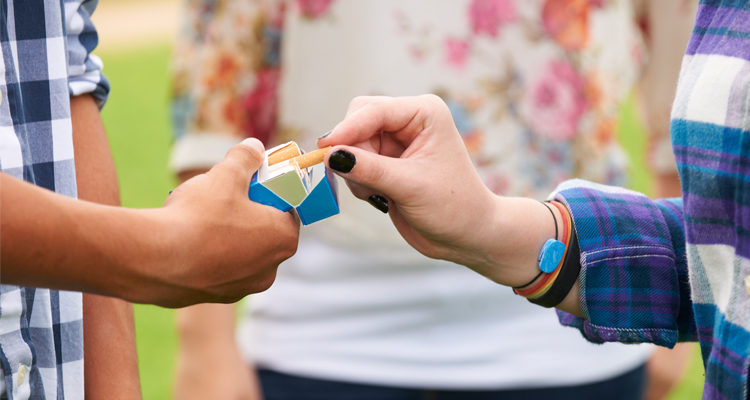Peer pressure can exert a powerful influence on children, whether teens, tweens, or younger. Consider the following findings for example:
◊ A best friend’s smoking habits are the biggest influence on adolescents who smoke, followed by their peer group, according to recent findings.
◊ 75 percent of kids between the ages of 12 and 17 reportedly say they’re encouraged to drink or smoke marijuana when they see images of their peers doing so.
◊ Another study found teens are more likely to indulge in various risky behaviors when their friends or peers are around.
◊ Even six-year-old kids who watched videos of other kids performing dangerous maneuvers on the playground were more likely to say they’d try the same dangerous maneuvers themselves by one account.
But parents can also have a sizable impact on their child’s formation. Here are some tips for discerning whether your child’s friends are a bad influence, including signs to watch for and how to foster positive role models and friends in your child’s life.
10 Signs Your Child’s Friends May Be a Bad Influence
Any negative changes in your child’s behavior, at home or at school, may be an indication they are hanging around the wrong crowd, including these signs:
1. Academic issues such as a decline in grades or a pattern of poor test scores
2. Disciplinary issues involving complaints from teachers or school administrators
3. A marked loss of interest in former hobbies
4. A pattern of neglecting or avoiding chores and other family responsibilities
5. Ignoring curfews
6. Evading questions about social plans and friends
7. Changes in mood and/or personal hygiene or appearance that may indicate substance abuse
8. Obsessive concern with weight or personal appearance
9. Patterns of online and social media use (including sexting, cyberbullying, or a search history revealing inappropriate adult material)
10. Indulging in risky behaviors (such as drinking, smoking, or sexual behaviors that can lead to an unwanted pregnancy or sexually transmitted disease)
11. Getting into trouble with the law
How your child interacts with friends or peers can also provide some insight into whether they may not be hanging around the right people. For example, does your child become a risk taker or show-off in the company of certain friends—just for the shock value? Do they trade mean gossip or become sneaky and mischievous? Do they act like a doormat, giving in to requests that go against their own self-interest?
How to Encourage Positive Role Models and Friends
In addition to staying attentive to potential signs of negative peer pressure in your child’s life, you can also encourage positive role models and friends. Here are some tips for doing that:
◊ Get to know your child’s friends and their parents and families. Invite your child’s friends into your home and spend time with them. Keep an open line of communication with their parents. That may mean clearly articulating your parental boundaries and behavioral expectations.
◊ Get involved in your school, church, and/or athletic communities. As you get more involved, you’ll be better positioned to identify, connect with, and channel the positive influences in your child’s environment. If your child is on a soccer team, for example, you may meet one or more families whose company you enjoy and whom you respect and admire. Be intentional about reaching out to them with invitations to socialize as families so that your child can have more exposure to these positive influences.
◊ Encourage your child to take part in positive peer-based activities, like sports, music, or community service projects. Many school sports teams or recreational clubs have explicit, or at least implicit, expectations of their members (such as maintaining a certain grade point average and not doing drugs). These more positive forms of peer pressure can encourage your child’s engagement in healthy social and behavioral norms.
◊ Create positive incentives that motivate your child to seek out good influences. You can’t dictate your child’s choices of friends and whom they naturally gravitate toward, but you can create positive incentives for good behavior, which indirectly will have bearing on your child’s choice of friends. For instance, if your child knows they’ll earn a car for achieving a certain GPA, they’ll be more likely to seek out the company of studious and hard-working types who can help them study and get good grades (assuming the car is motivation enough). What’s key here is landing on an incentive that truly motivates your child to embrace good behavior and the company of like-minded peers.



























































































